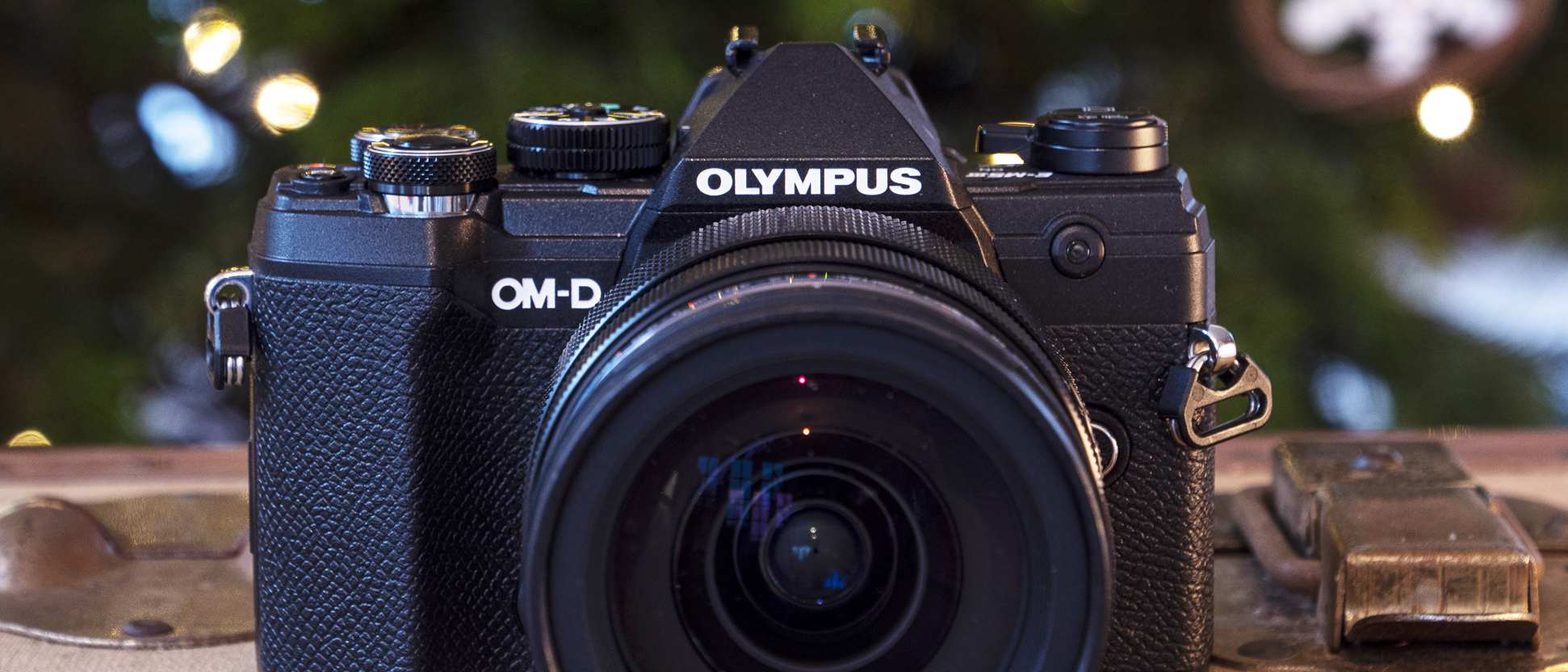TechRadar Verdict
Stylish, lighter than ever, and crammed with shooting modes for users of all skill levels, power under the hood and improvements across the board, the Olympus OM-D E-M5 Mark III is a sensible upgrade. It may not quite match the overall image quality potential of its larger-sensor rivals, but the E-M5 Mk III hits the sweet spot for size, weight, handling and features.
Pros
- +
Powerful image processor
- +
Much improved video spec
- +
Insanely good image stabilization
- +
Tiny body, excellent handling
- +
A plethora of shooting modes
- +
Stylish looks
Cons
- -
Smaller sensor than rivals
- -
No longer has metal shell
- -
Larger handgrip would be welcome
- -
A little expensive
Why you can trust TechRadar
The Olympus OM-D E-M5 Mark III sits in the middle of the company's OM-D range, which also features the pro-friendly E-M1X, the soon-to-be-replaced E-M1 Mark II, and the entry-level E-M10 Mark III.
It's aimed at beginners who are looking for a camera to grow into, and also experienced photographers who need advanced shooting capabilities from a camera that's smaller than its APS-C rivals.
Coming once every four years (2011, 2015 and 2019), E-M5 iterations have been launched at a relative snail’s pace by the standards of the ultra-competitive camera market; but slow and steady is no bad thing, and this third version, unsurprisingly, represents a comprehensive upgrade over the E-M5 Mark II.
You get the same 20.4MP sensor as the one found in the higher-level OM-D E-M1 Mark II, featuring on-chip, phase detection autofocus, which brings significantly improved continuous autofocus compared to that camera. Then there's the upgraded video specification and class-leading image stabilization.
We love the OM-D look in general, and the compact and lighter-than-ever body of the E-M5 Mark III is packed with features too, including a plethora of shooting modes, both fun and serious.
On paper, then, the E-M5 Mark III is the epitome of everything there is to love about the Olympus OM-D camera line. But how does it fare in practice?

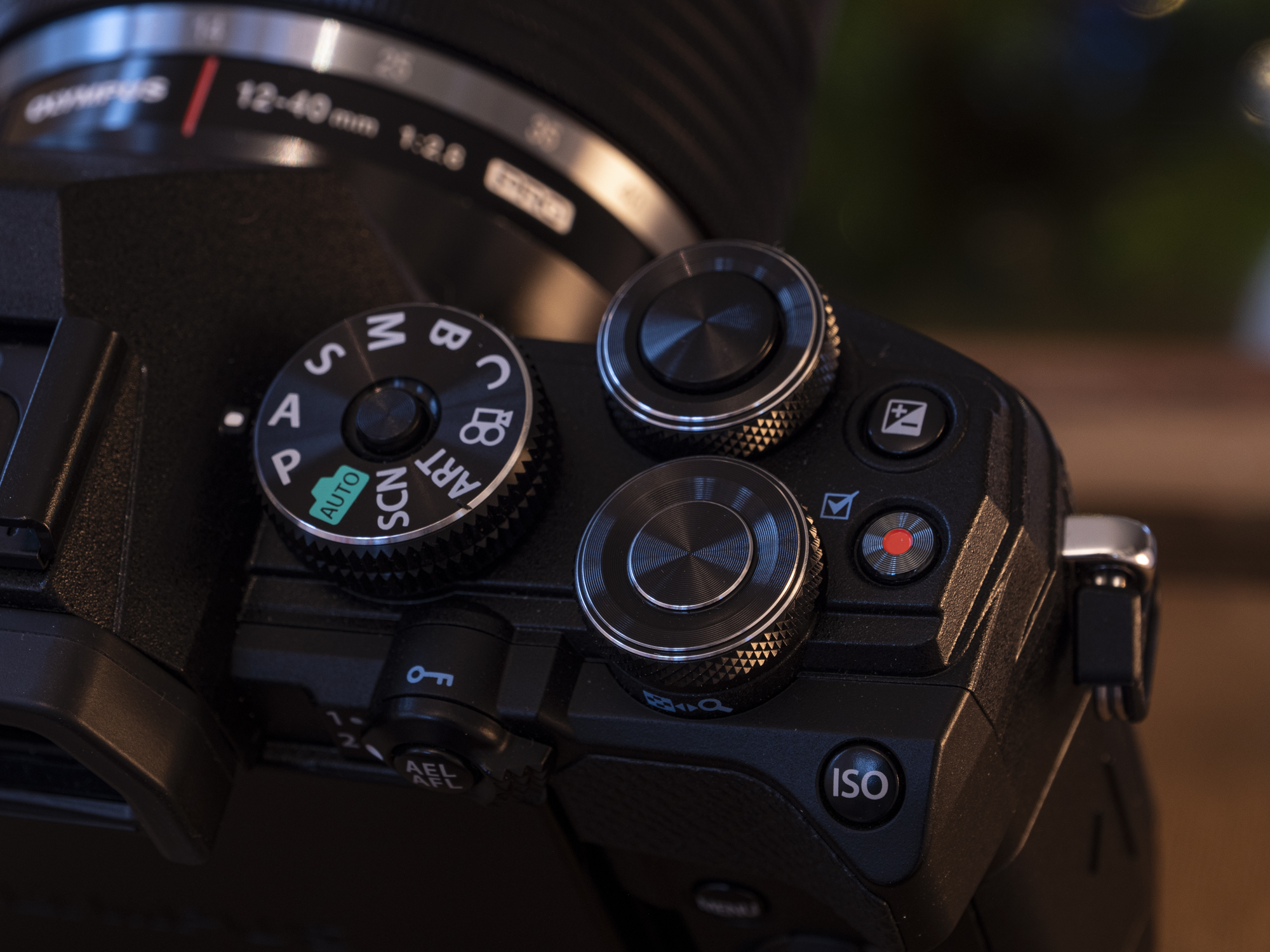

Features
Four years on, the 16MP sensor of the E-M5 Mark II feels a tad dated. An increased resolution in this latest version was expected, and sure enough we get a 20.4MP sensor here. It’s the same sensor as found in the Olympus E-M1 Mark II, and it's a major upgrade.
The new sensor brings the E-M5 Mark III up to speed with the Panasonic G90, its closest rival. Yet outright image quality is arguably where both these cameras lag behind their rivals. There are other cameras at this price point, like the Fujifilm X-T30, with APS-C sensors that fair better in low-contrast conditions, and which offer greater resolution and dynamic range.
That said, Olympus does offer solutions to the E-M5 Mark III's sensor size limitations. For example, its High Res Shot mode makes use of sensor-shift to composite multiple images and create a final image with a much higher resolution. High Res Shot only works for static subjects, and you’ll need a tripod, but in return you get an 50MP image.
To help in low light, Olympus’ class-leading image stabilization also lets you use slower shutter speeds when shooting handheld and get sharper shots than would otherwise be possible.
Slower shutter speeds aren't a total solution of course, because any movement in the scene will be blurred – an effect you may or may not want. But we’re yet to find a more effective image stabilization system than what Olympus provides in its current OM-D cameras. Shooting handheld, we’ve been able to get sharp shots with shutter speeds running into seconds; it’s mind-boggling really.
The new sensor features on-chip phase detection autofocus. This is arguably the most significant change for the E-M5 series, and continuous autofocus for moving subjects and for video is much more effective and reliable than before.
When it comes to shooting modes, you get a lot for your money. To name some, there's LiveView Bulb mode, Image Bracketing, HDR, Multiple Exposure, Keystone Compensation, High Res Shot, Interval Shooting and Time-Lapse. You can bracket just about anything, including focus bracketing up to 999 frames, plus bracketing for ART effects.
On top of all this, images can be remotely captured, or uploaded and shared, via the Olympus Image Share App over Wi-Fi or Bluetooth. In short, the Olympus OM-D E-M5 Mark III is an extremely capable camera that leaves little to be desired in terms of shooting options and features.
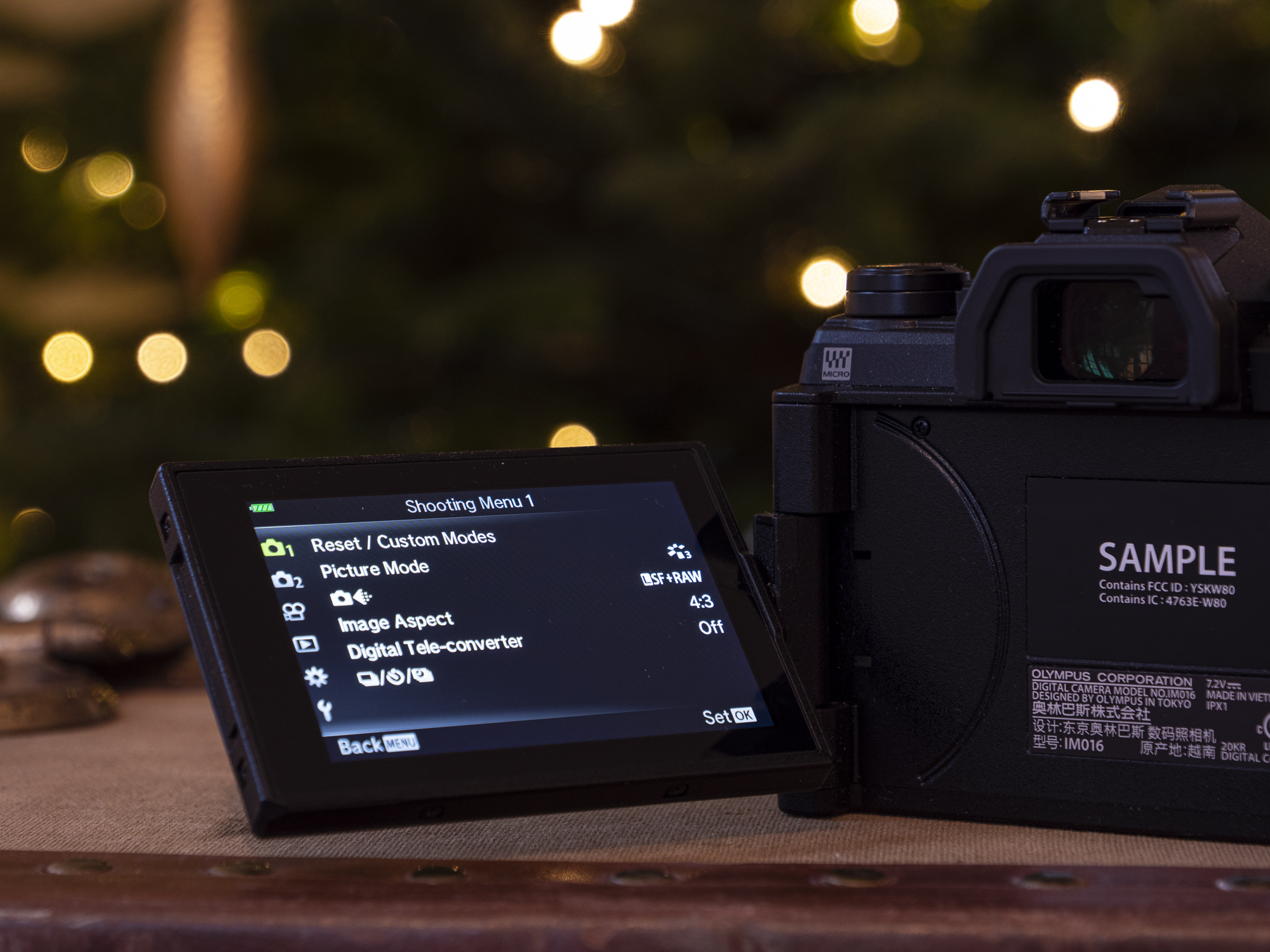
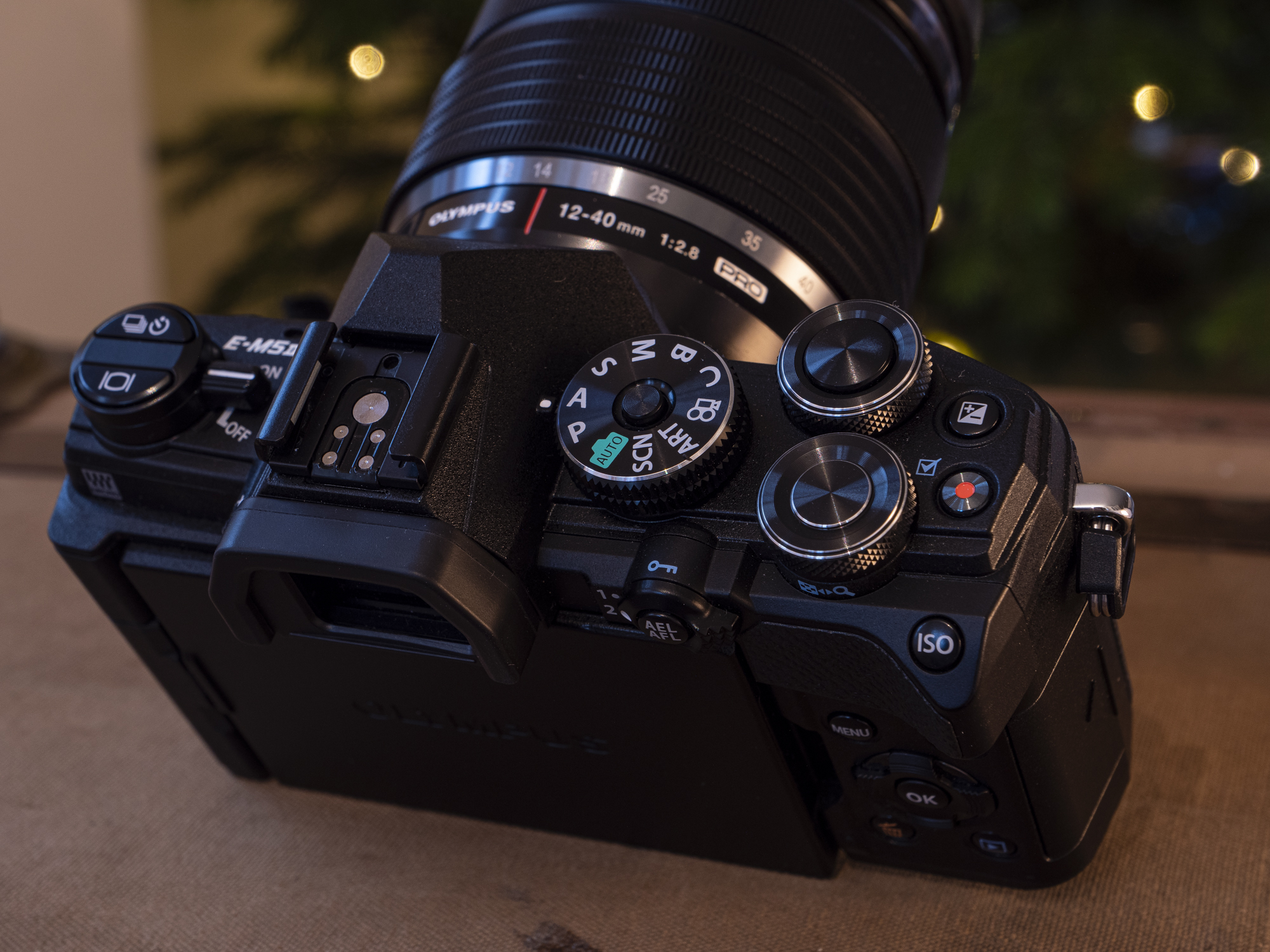
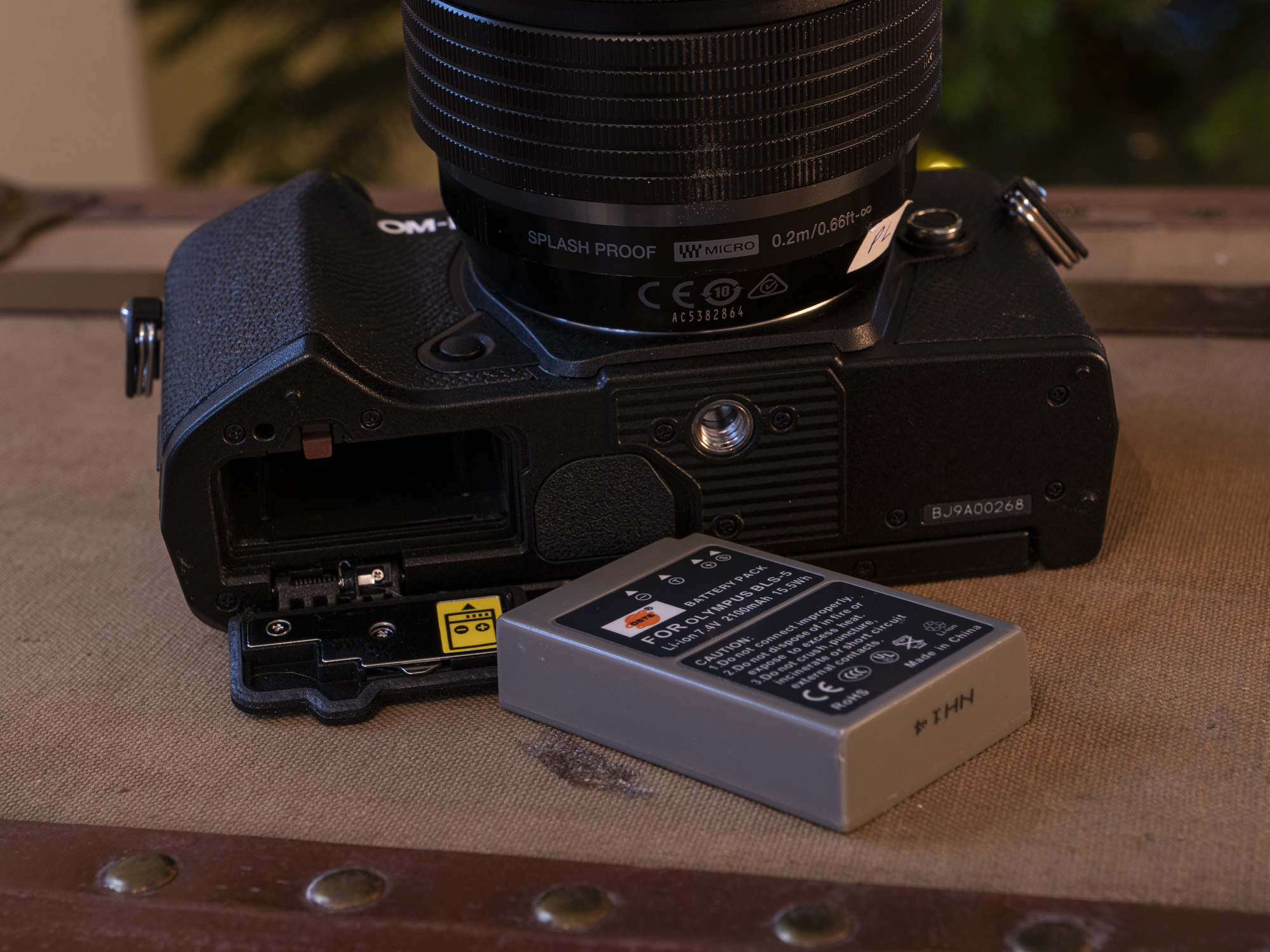
Build and handling
There is no denying how attractive a camera the E-M5 Mark III is. Out of the box, this is a camera that you want to have in the hand, and once it's there you'll find it handles very well indeed.
At 414g with battery and memory card, this is the lightest E-M5 camera yet. It's a whole 50g lighter than the E-M5 Mark II; add a relatively compact lens and you’ll barely feel like you're holding the camera. This DNA is where the OM-D system really shines – camera bodies and lenses are a fraction of the weight compared to larger-format rivals.
That 50g has been shaved off thanks to a new polycarbonate shell. This could be viewed as a downgrade from the E-M5 Mark II, which has a metal body – we wouldn’t want to push the E-M5 Mark III too much in adverse conditions, although it is still weather-sealed and feels solid enough.
The hand grip offers some purchase, but it’s nowhere near as pronounced as the grip on the E-M1 Mark II. It's big enough to let you comfortably handle the camera with small lenses fitted, but attach a large lens and you'll feel a tug from the front.
In fact, we used the 12-40mm f/2.8 for much of this review, and even that combo felt a fraction front-heavy; you end up relying more on the thumb grip at the rear, which is perfectly formed and grippy. If we were to choose between the two, the grip of the E-M1 Mark II wins, hands down.

Of course, a small body leaves little space for external controls, yet Olympus has done well here to include two chunky top dials, a well-placed MF/AF switch and various custom buttons. Dials aside, though, the controls are very small, requiring precise operation.
We love the vari-angle LCD touchscreen, which makes shooting at awkward angles possible, and the touch function for shutter and for autofocus, which covers what appears to be the central 80-90% of the frame.
There's no AF joystick; however, we wouldn’t expect a joystick on a camera like this, and the touchscreen is a genuine alternative for quick AF point selection. The touchscreen is also useful for manual focusing – touch the area you want to focus on, and select the zoom option for a closer look at up to 14x magnification.
With Auto Switch active, the eye sensor switches between the LCD display and the EVF, even when the screen is folded out. That jump between displays can sometimes be unwanted and frustrating, though, and helpfully Auto Switch can be deactivated.
The camera is quoted as having a 310-shot battery life, which is fairly standard for a mirrorless camera like this. Start playing with some of the more high-level features, such as Cinema 4K video shooting, and of course the battery will drain – and at times we found the battery life indicator to be unreliable, which was a concern.
Those who want to use this camera heavily should consider investing in a couple of extra batteries. On the plus side you do get a battery charger bundled with the camera that achieves a full charge quicker than most, and it's also possible to charge on the go with a power bank via USB – now through the universal mini-USB connection.
There's also a port to connect an external microphone, although videographers won’t be able to monitor sound as there's no headphone jack.

Performance
So how does the Olympus E-M5 Mark III fare when it comes to speed of operation? Well, it’s quick in almost every regard. Startup time is snappy, and all the controls are responsive.
High-speed burst shooting is up to 10fps with the mechanical shutter, which is very competitive. What’s more impressive here, though, is how many images the buffer can handle.
There are many factors affecting burst shooting performance, but with favorable camera settings, including a low ISO and recording to a UHS-II SD card, we were able to shoot unlimited JPEGs at 10fps, and even more than the quoted 150 raw images.
After a sequence, the camera is ready to shoot at full speed again with little delay. This responsive performance is massively impressive, and far better than from many other enthusiast-level cameras.
Focus is fixed to the first frame of a 10fps sequence; if it's continuous AF you want, then you'll need to use the 6fps continuous low mode. If 10fps isn't quick enough, meanwhile, it’s possible to shoot at 30fps in the silent electronic mode, although this mode may not be suitable for all action given the possibility of rolling shutter.
For the larger part of this review we set the camera to its evaluative metering mode, and exposures were almost always spot on. There are dedicated metering modes for creative high-key or low-key exposures, but it's perhaps a little quicker to key in those effects using the exposure compensation dial.




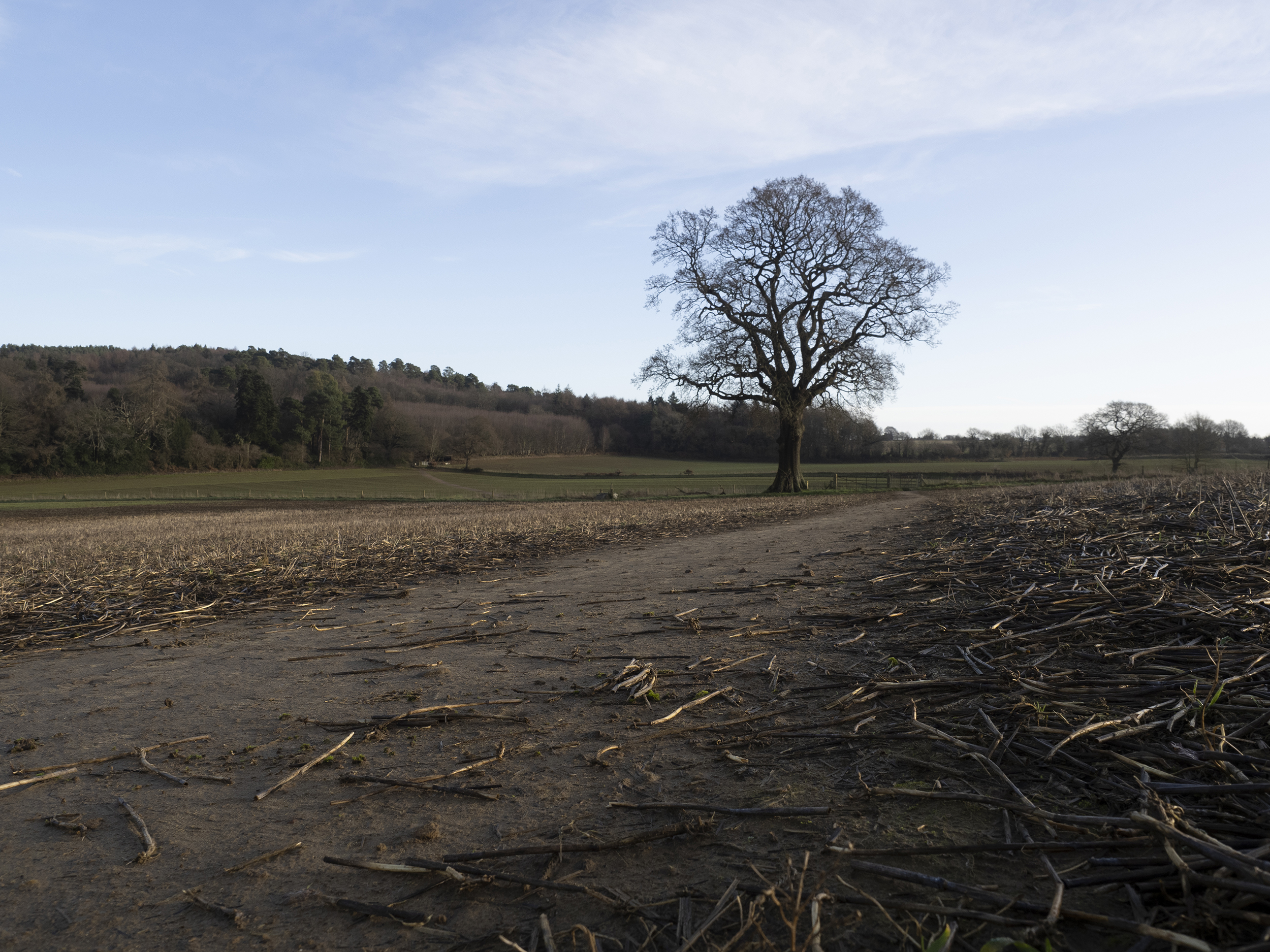
Image and video quality
The Olympus E-M5 Mark III's 20.4MP sensor, as found in the pro-level E-M1 Mark II, enables maximum file sizes of 5184 x 3888 pixels – that's a print size of approximately 14.8 x 11.1 inches (roughly A3-size), without interpolation.
In many ways, there's nothing new to say about the sensor format. At this price point, there are other cameras available that have better image quality potential, with higher resolution, wider dynamic range and better low-contrast light performance. There are only so many pixels that a Four Thirds sensor can sensibly host.
We’ve mentioned some workarounds: the High Res Shot mode enables you to create a final image of 50MP, while the class-leading image stabilization allows handheld shooters to use slower shutter speeds and maximize the light intake for improved image quality; and for stretching the dynamic range, there’s HDR. None of these are total solutions, but they're very welcome nonetheless.
Another issue is that the smaller the format, the less control you have over shallow depth of field. However, Olympus does have a fantastic lens selection, including pro lenses with a f/1.2 aperture – so if you want a really shallow depth of field, it is possible.
Something that's mentioned less often about the Four Thirds format is the greater depth of field on offer, which can be extremely useful for landscape and macro photography.




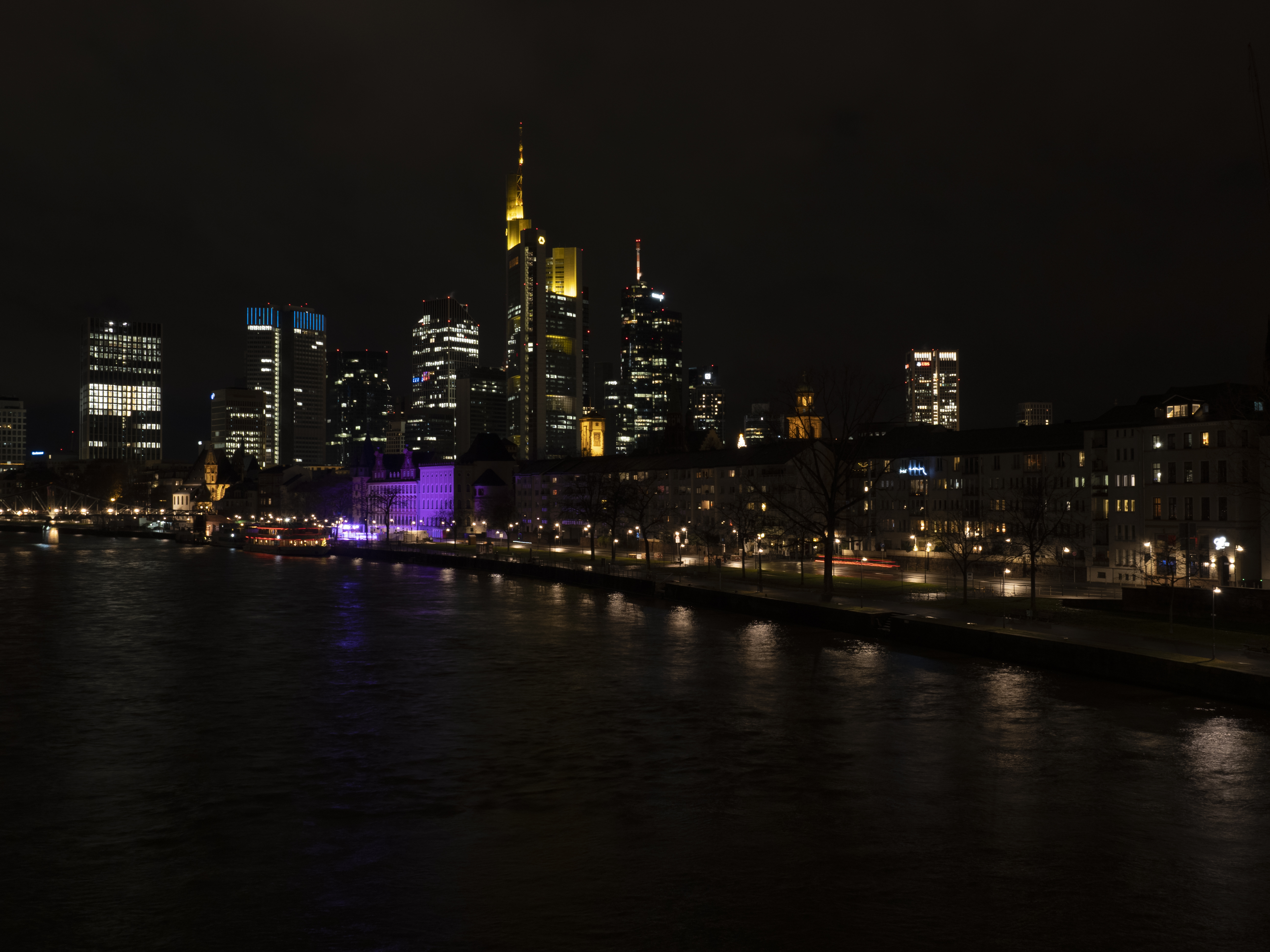
We have few complaints when it comes to color rendition for both stills and video. The Flat color profile for video shooting is lovely, and we didn't particularly miss having a V-Log color profile option. Stills-wise, we tended to stick with the Natural color profile, which offers a palette that's understated yet rich.
For those who like other in-camera color effects, there are a host to choose from, such as Pinhole, Cross-Process and Vintage – and with bracketing activated you can apply up to all 26 of these to the same shot with a single press of the shutter.
The E-M5 Mark III is a very capable video shooter – during a video shoot we used it as a third camera for behind-the-scenes footage, and it was more than up to the task. It's possible to shoot Cinema 4K (4096 x 2160) videos at 24fps, and a 237Mbps bit-rate – that’s seriously impressive at this level. Regular 4K video (3840 x 2160) is on offer at 24, 25 or 30fps and 102Mbps.
Full HD videos up to 60fps can be recorded in ALL-I format, which ups the bit rate to 202Mbps. You can also shoot Full HD videos up to 120fps. All in all, this marks a big step up from the E-M5 Mark II.
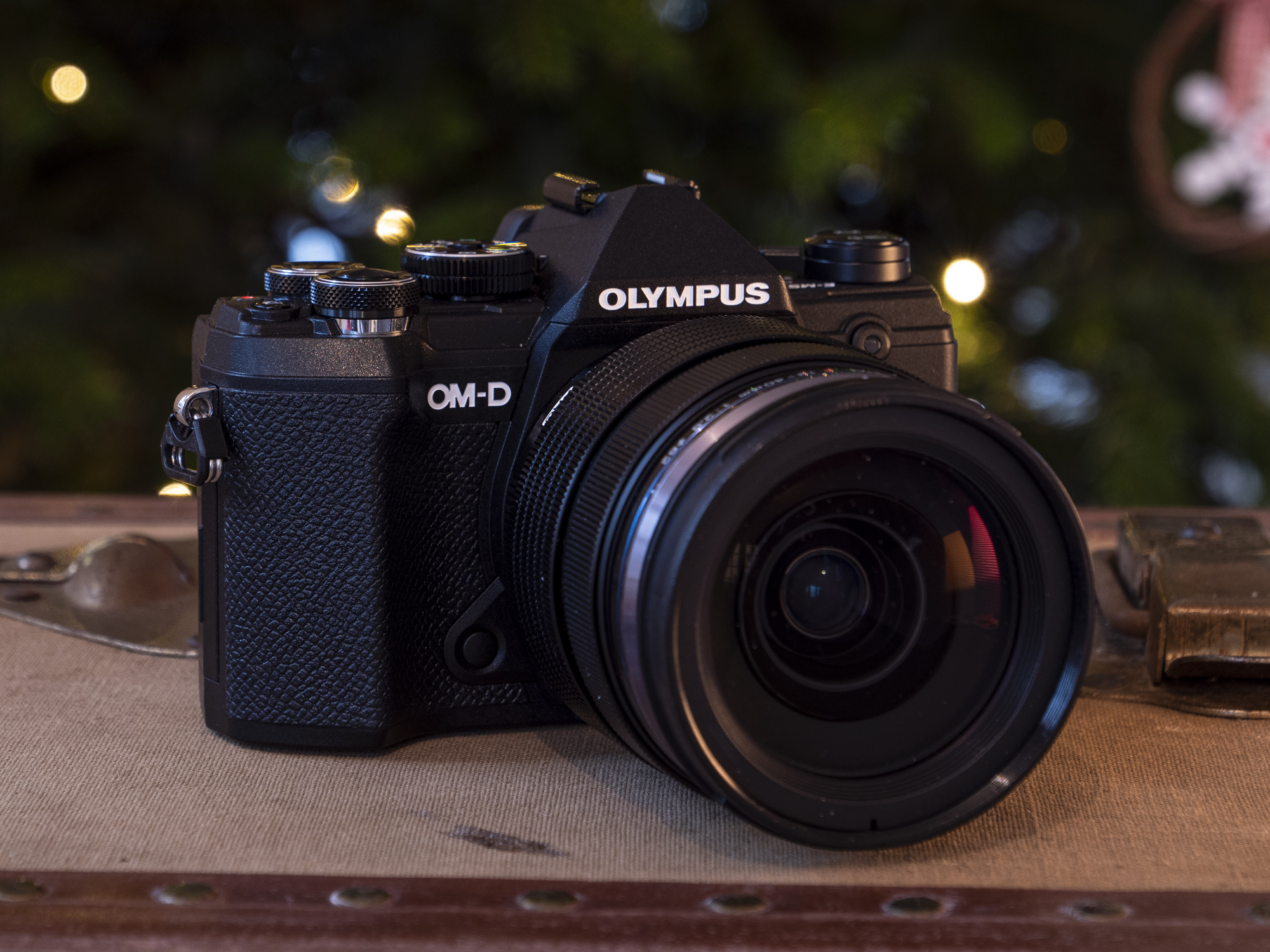
Olympus OM-D E-M5 Mark III verdict
From the outside, the Olympus OM-D E-M5 Mark III looks like a purist's camera, but under the hood it's a serious machine. This is the DNA of the OM-D series: attractive cameras that are compact and lightweight, with a great selection of equally compact and lightweight lenses, containing a technological powerhouse.
With four years between the E-M5 Mark II and the Mark III, it’s little surprise that this latest version brings improvements in almost every area. The big changes are the new sensor with higher resolution, on-chip phase detection autofocus, and improved video performance.
Crucially, these features are all well balanced by the latest processor and UHS-II card compatibility – this is not a camera that you have to push beyond its capabilities.
There is, of course, the usual debate to be had around sensor format – you don’t get the same image quality potential as from larger-sensor cameras with higher resolution. The reward, though, is a camera that otherwise leaves little to be desired in terms of features and versatility.
The E-M5 Mark III is quick in every way, feels great in the hand, and is a very capable shooter. We know of few cameras, particularly at this price, with such an array of shooting modes and features to enjoy.
No camera is perfect, but we think the Olympus OM-D E-M5 Mark III hits a real sweet spot, epitomizing all that there is to love about the brand’s mirrorless cameras.
The competition

Panasonic Lumix G95/G90
At this price point, the market is packed with mirrorless cameras mainly featuring either APS-C or Four Thirds sensors. The larger, APS-C sensor, cameras include the Sony A6000 series and new Nikon Z 50, but the Panasonic G95 (G90 outside the US) is the most obvious rival to the E-M5 Mark III. Both cameras feature 20 million-pixel Four Thirds sensors and the same lens mount. There was a time when you’d lean towards Panasonic for video and Olympus for stills, but those lines have been blurred in this category. For example, the G95 and E-M5 Mark III both offer an impressive video specification, image stabilization, articulated screen and mic input. The G95 is slightly cheaper and also has a headphone jack, though it is larger and heavier thanks to its DSLR styling, as opposed to the retro chic of the E-M5 Mk III.
Read our in-depth Panasonic G95/G90 review
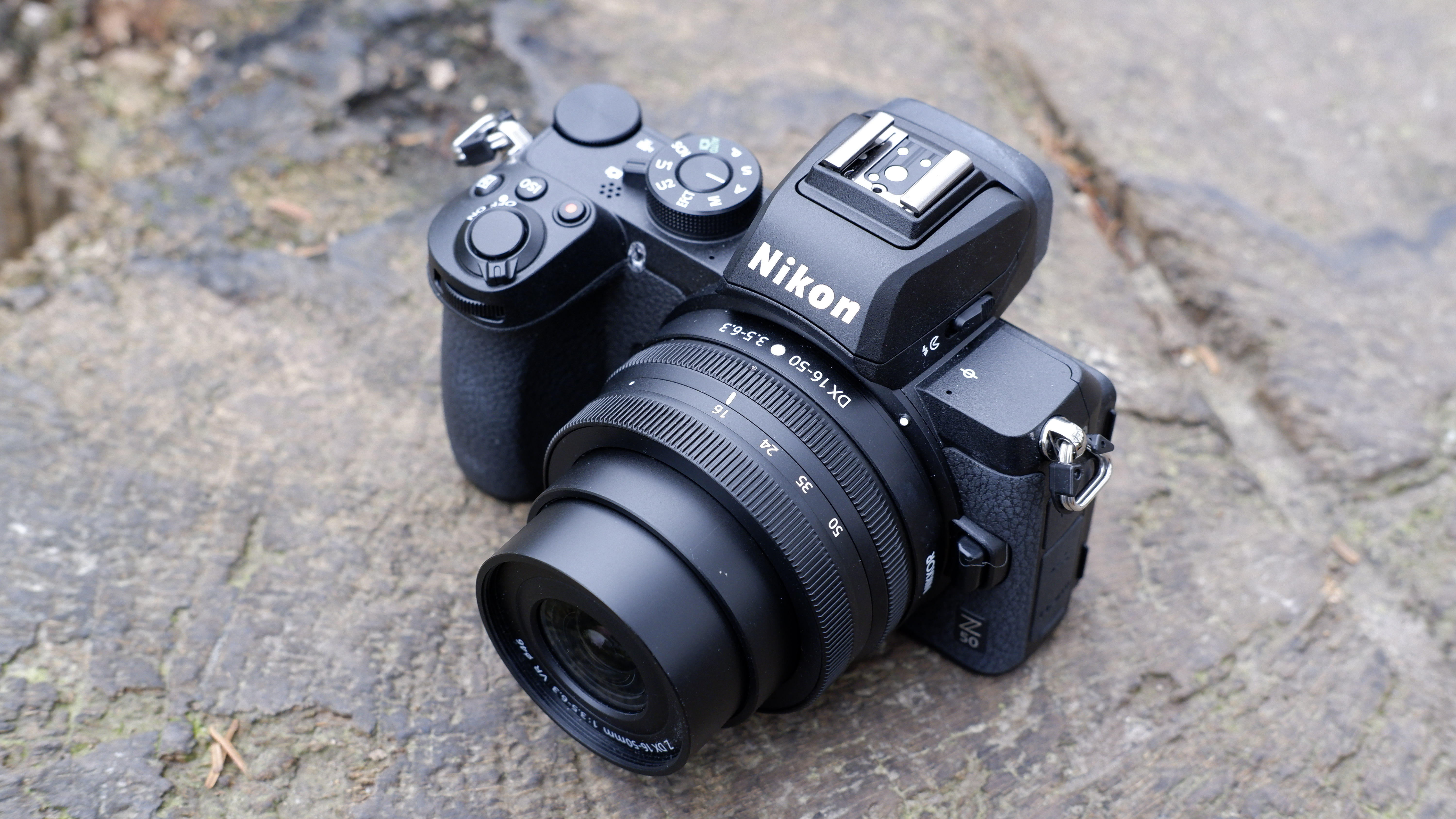
Nikon Z 50
The Nikon Z 50 also has a larger, APS-C, sensor than the E-M5 Mark III, though the Olympus camera counters that with its inbuilt image stabilization. Despite a few other technical differences – the Z 50 has a better grip, ISO range and price tag – the decision really comes down to lenses. The Micro Four Thirds system has far and away the bigger selection of native lenses, although if you already have some existing Nikon glass from an older DSLR, you may save money by using those with the Z 50 via an adaptor.
Read our in-depth Nikon Z 50 review
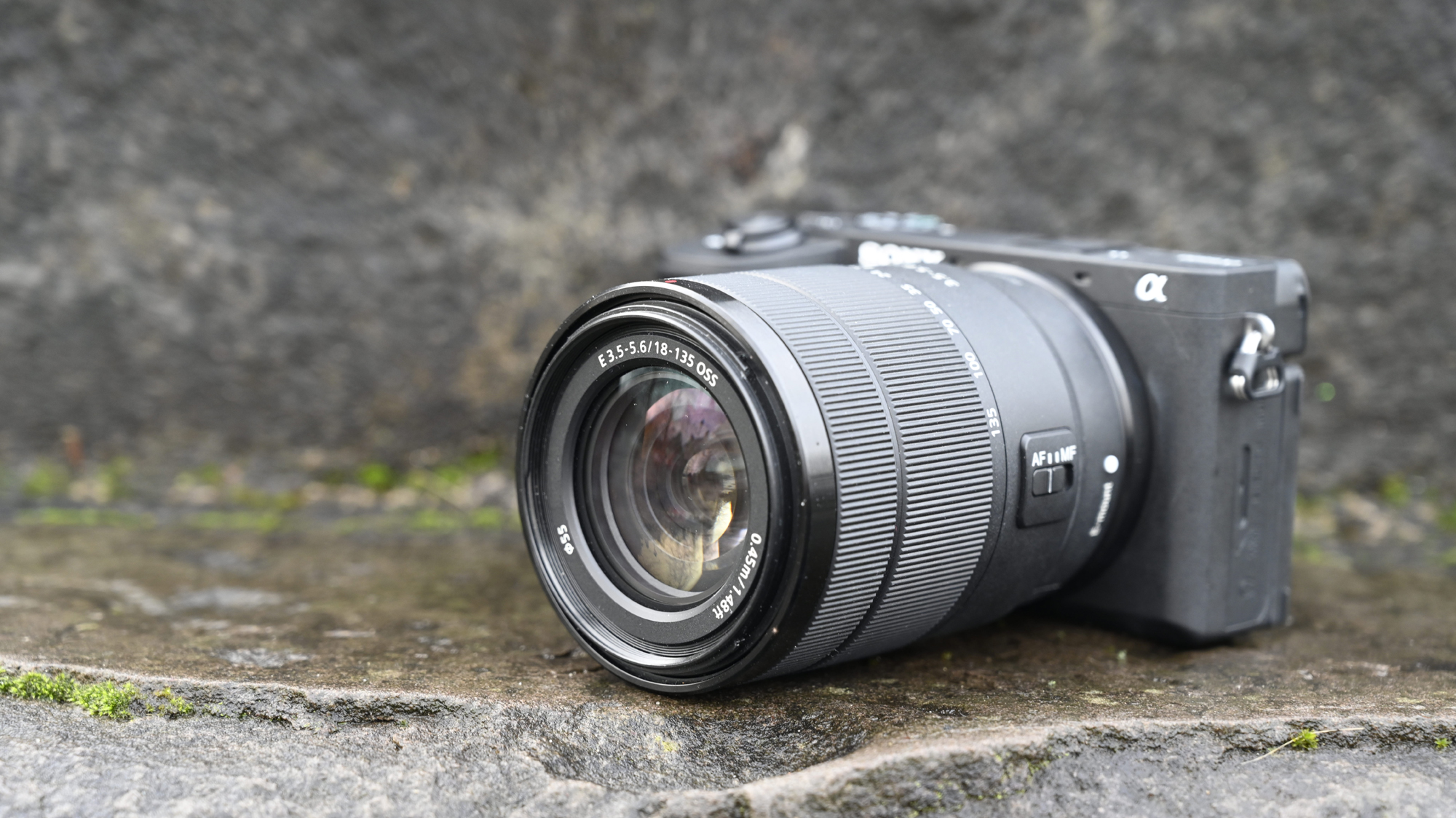
Sony A6600
Another of the E-M5 Mark III's main APS-C rivals, the Sony A6600 is a particularly strong contender for those who like to shoot both stills and video because like the Olympus it offers inbuilt image stabilization (IBIS). That said, it is a little more expensive, and simply isn't as fun to use as the E-M5 Mark III, with an older body design that undermines its strong feature set, and a convoluted menu system.
Read our in-depth Sony A6600 review
- Check out our list of the best cameras in the world right now
- Or read our guide to choosing the best travel camera

Tim is the Cameras editor at TechRadar. He has enjoyed more than 15 years in the photo video industry with most of those in the world of tech journalism. During his time as Deputy Technical Editor with Amateur Photographer, as a freelancer and consequently editor at Tech Radar, Tim has developed a deeply technical knowledge and practical experience with cameras, educating others through news, reviews and features. He’s also worked in video production for Studio 44 with clients including Canon, and volunteers his spare time to consult a non-profit, diverse stories team based in Nairobi. Tim is curious, a keen creative, avid footballer and runner, and moderate flat white drinker who has lived in Kenya and believes we have much to enjoy and learn from each other.
